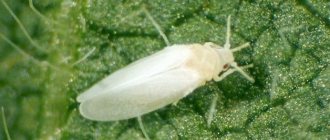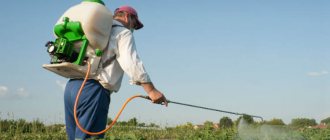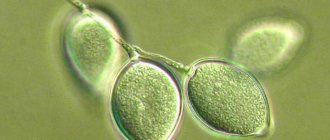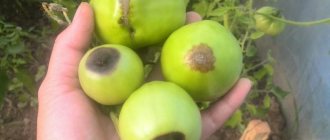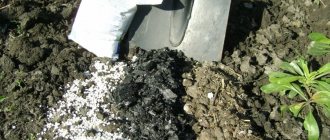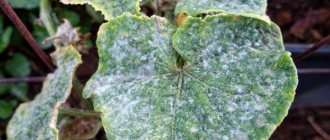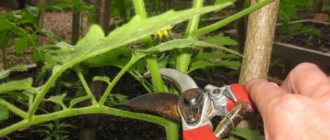Preface Phytophthora of tomatoes is the most common disease that affects this crop both in open and protected ground.
Phytophthora of tomatoes is the most common disease that affects this crop both in open and protected soil. Plants are especially often infected during unstable seasons with sharp changes in day and night temperatures, accompanied by high humidity. If you do not take timely measures to protect tomatoes from late blight, you can completely lose your harvest.
The disease manifests itself in the form of gray-brown spots of irregular shape on the leaves (unlike macrosporiosis, in which the spots are concentric) and on the stems. The leaves are covered with a white coating on the underside. Dark brown spots of irregular shape form on the fruits.
Optimal conditions for the development of the pathogen are a temperature of 20-24 ° C and air humidity of at least 75%. Severe damage occurs during periods of heavy rainfall with a sharp change in temperature between day and night. Fungal spores are carried by droplet-liquid moisture.
In dry air - at a relative humidity of 20-40% - the conidia of the fungus die after 1-3 hours. The pathogen overwinters in affected potato tubers. Plant residues, seeds, seedlings from greenhouses and greenhouses can also be a source of disease.
After reading this material, you will learn how to combat tomato late blight with effective drugs and folk remedies.
Late blight (late blight) of tomatoes - description
Phytophthora is tenacious and ubiquitous: it lives on seeds, plant debris, soil, greenhouse walls, and garden tools. The disease progresses in cold and wet weather. Most of all, late blight loves calcareous soils, thickened plantings into which fresh air is difficult to enter, temperature changes, dew, and plants weakened by poor or insufficient care.
Signs of late blight on tomatoes
This common and most dangerous disease can be diagnosed based on several signs:
- the underside of the leaf blade becomes covered with spots, gradually the leaves turn brown, dry out and fall off;
- the shoots of the plant darken and then turn black;
- Black areas form on the fruits.
We will try to give you as much information as possible about this disease and answer your questions:
- Basil: growing on the windowsill and in the garden
- late blight on tomatoes - what to do?
- How to protect tomatoes from late blight?
- how to fight late blight (late blight) on tomatoes?
- How to treat tomatoes against late blight in open ground?
- how to get rid of late blight on tomatoes?
Preventive measures against the appearance of the disease
While the plants are still healthy, developing well, flowering and setting fruit, you can protect them from infection as much as possible. To prevent the appearance of late blight on tomatoes in open ground or a greenhouse, the following agrotechnical measures must be carried out:
- Follow the principles of crop rotation. Do not plant tomatoes after their relatives: potatoes, tomatoes, eggplants and peppers, and do not plant them close to these crops. Can be planted after pumpkin, onions, garlic, cabbage, carrots and beets. Next time you can plant tomatoes in the same beds only after 4 years.
- The area for this crop must be open so that it is well lit and warmed by the sun.
- Tomato varieties must be either early or resistant to this disease.
- Peat and sand should be added to carbonate soils, and onion peels should be placed in the holes when planting seedlings.
- Seedlings should be planted at the distance required for the given variety so that the bushes are well illuminated by the sun and ventilated.
- It is necessary to water the bushes at the roots, without getting on the leaves, so as not to wet them. The ideal time is morning (excess moisture should evaporate during the day). An excellent option in this case is the arrangement of drip irrigation, when all the moisture enters the ground and does not fall on the leaves.
- After watering, loosen the soil or lay a layer of mulch on it.
- Tear off the lower leaves and stepsons to ventilate the plant from excess moisture.
- Regularly treat tomatoes in the greenhouse against late blight with fungicidal preparations, and ventilate the room after watering.
- Correctly feed tomatoes: first with nitrogen, then exclude it from feeding and feed them only with phosphorus and potassium (nitrogen causes excessive growth of green mass, which is undesirable either for the plant itself or for maintaining its health).
By following these simple rules, you can hope that tomatoes are protected from late blight, that the appearance of the disease will be avoided or its spread will be stopped.
Treatment of tomatoes against late blight
How to treat tomatoes against late blight
There are many chemical means of destroying late blight, but they have the same principle of action. In a long fight against late blight, it is best to alternate means of protection, since late blight is very tenacious and easily adapts to the drug if you use it from year to year.
Remedies for late blight on tomatoes
How to treat tomatoes against late blight? Tomatoes are treated for late blight with fungicides. In amateur gardens and vegetable gardens, the most commonly used drugs for late blight are Previkur, Fundazol, Fitosporin, Quadris, Ridomil, Switch, Skor, Topaz, Horus, Fundazim, Thiovit Jet, HOM, Bordeaux mixture, copper sulfate, copper oxychloride, Trichopolum and other. But sometimes the fight against late blight on tomatoes is carried out using old, centuries-tested folk remedies.
In the photo: Phytophthora on a tomato stem
How to treat tomatoes against late blight
How to spray tomatoes against late blight? Dissolve 2 tablespoons of copper sulfate in 10 liters of water and treat the tomatoes with this mixture before flowering. You can also use calcium nitrate as a fungicide - dilute 1 tablespoon of the substance in 10 liters of water.
The antibiotic Trichopolum is also used to protect against late blight, dissolving 10 tablets in 10 liters of water and treating tomatoes with this composition twice a month. And fungicides from the store (Fitosporin, Fundazol, etc.) are diluted in accordance with the manufacturer’s instructions. The first treatment of tomatoes is carried out at the stage of ovary formation, after which spraying is repeated every ten days.
If tomatoes are severely affected by late blight, it is necessary to remove and burn all the affected leaves, and treat the fruits, and especially the stalk, with a one percent solution of calcium chloride.
Watering tomatoes against late blight
You can maintain the level of protection of tomatoes from fungal infection by adding a fungicide to the water for irrigation every now and then. The dosage of the fungicide is determined based on the recommendations of the drug manufacturer.
In the photo: Tomatoes affected by late blight
Spraying tomatoes against late blight
Treating tomatoes against late blight with chemicals gives a quick and reliable result, but it is undesirable to use them on already ripening fruits, as this may negatively affect the quality of the crop. How to be?
How to deal with late blight so that it does not affect the quality of tomatoes? You can protect tomatoes from disease using preventive measures or non-toxic folk remedies. But if you decide to use fungicides, treat the tomatoes with them before flowering, before the first ovary appears, then again after two weeks to consolidate the result. In the future, the use of the fungicide should be stopped and only folk remedies to combat late blight should be used.
Causes of late blight and risk factors
An experienced gardener knows what late blight looks like on tomatoes not from photos from the Internet, but in fact, in the same way as he knows about the unfavorable conditions that provoke it.
However, even this precious knowledge, obtained through trial and error, does not provide a 100% guarantee that the “mushroom” season will bypass our summer cottages.
Cold summers with prolonged rains, heavy dew and fog, late planting of tomato seedlings in open ground, film shelters and the accumulation of condensation on their inner surface due to a significant difference in night and day temperatures - all of these are objective risk factors for the development of late blight.
Conversely, stable sunny weather, short-term precipitation and early-ripening, productive tomato varieties are more conducive to avoiding fungal rot, since its pathogens prefer dampness and coolness, rather than heat.
Optimal conditions for the development and reproduction of zoospores that infect plants are high humidity and a decrease in temperature below +15.
If you don’t take preventive measures, it’s a disaster; you can lose half of your standing crop within the next week.
Folk remedies for late blight on tomatoes
How to fight late blight on tomatoes with folk remedies
Late blight on tomatoes at the very beginning of the disease can be destroyed using less radical methods such as treating the garden with fungicidal preparations. Folk remedies for treating tomatoes against late blight may not be so effective, but they are harmless to the human body. How to save tomatoes from late blight using folk remedies?
Late blight on other crops - treatment and prevention
Garlic-manganese infusion against late blight on tomatoes
You can treat them with an infusion of garlic with potassium permanganate - 100 g of garlic minced in a meat grinder (you can use not only the cloves, but also the leaves and arrows of the plant for this purpose), pour a glass of water, leave for a day, strain and, diluting this infusion in 10 liters of water, add 1 g of potassium permanganate to it.
In the photo: Tomato bush with late blight
Infusion of straw against late blight on tomatoes
Pour a kilogram of rotten hay or straw into 10 liters of water, add a handful of urea and let it brew for 3-4 days. Strain the infusion and treat the tomatoes with it.
Late blight yeast on tomatoes
Dissolve 80 g of yeast in a bucket of water and pour this solution over the tomatoes at the first symptoms of late blight.
Copper wire against late blight on tomatoes
Spraying tomatoes against late blight can be replaced by “copper piercing.” How to protect tomatoes from late blight using copper wire? The wire needs to be calcined over a fire or sanded, cut into pieces 3-4 cm long, insert such a piece into the stem of an adult tomato bush at a height of 10 cm from the soil and bend the ends of the wire down. Never wrap the wire around the stem!
- What is peat soil suitable for growing?
How to Grow Healthy Tomatoes - The Complete Guide
Some gardeners prefer to wrap pieces of copper wire around the roots of the seedlings before planting them in the garden. The fact is that microdoses of copper, enhancing oxidative processes, stabilizing the production of chlorophyll and stimulating oxygen metabolism, strengthen the plant’s immunity and make it resistant not only to late blight, but also to other infections.
Iodine for late blight on tomatoes
Everyone knows about the antimicrobial effect of iodine, so the method of spraying tomatoes with a milk-iodine composition is widely popular among gardeners. For 10 liters of water, one liter of low-fat milk and 20 drops of iodine are enough.
In the photo: What stem blight looks like
Ash solution against late blight on tomatoes
This treatment is carried out in three stages: as soon as the seedlings take root and begin to grow, before the tomatoes bloom and immediately before the first ovaries appear. Add half a bucket of wood ash to 10 liters of water and leave for three days, stirring from time to time. When the composition has settled, the liquid must be drained, its volume brought to 30 liters and 30-35 g of liquid soap added to the composition.
Serum against late blight on tomatoes
Treating tomatoes against late blight with curdled milk serum also gives good results. Dilute the serum in a one to one ratio with water and from the first days of July spray the tomatoes at least every day.
Signs of late blight
Late blight is a fungal disease; the spores of this fungus overwinter in the ground, but mainly spread in potato tubers, in which they safely survive the winter, and wake up with spring plantings.
Therefore, late blight first affects potatoes, and then the spores fly to tomatoes. Late blight begins with the appearance of dark brown spots on the leaves, then they spread to the stems and fruits. The lower leaves are affected first. The spots can be of different shapes and sizes. At the beginning of the disease, there is a whitish coating on the leaves. Fruits become diseased through the stalk. They may appear clean at first, but as they are stored they will also develop brown spots. This disease can destroy entire tomato plantings in a few days.
Prevention of late blight on tomatoes
Protecting tomatoes from late blight
It is no secret to any gardener that it is better to prevent a disease than to fight it, even successfully. In order to protect tomatoes from late blight infection, there are effective preventive measures. How to spray tomatoes against late blight? What preventive measures can protect them from infection?
In the photo: Late blight disease of tomatoes
Prevention of late blight on tomatoes in open ground
Dissolve a glass of table salt in 10 liters of water and treat saturated but still green tomatoes with this brine - the composition forms a film on the fruits that protects them from infection.
You can dilute 1 liter of kefir, fermented for two days, in 10 liters of water, mix thoroughly and treat the tomatoes with this composition. The first spraying should be carried out two weeks after planting the seedlings in the ground, and then repeat the treatment of tomatoes with kefir weekly.
Agrotechnical methods of prevention from late blight
If you follow crop farming techniques, you can reliably protect your tomatoes from late blight. Here is a list of activities that serve this purpose:
- in areas with excess lime content, the natural balance of the soil should be restored by adding peat under digging. When planting seedlings, it is better to fill the holes with sand;
- observe crop rotation: do not plant tomatoes in an area where carrots, turnips, cauliflower, beets, cucumbers or onions grew before them;
- do not thicken the plantings - follow the planting scheme developed by agricultural technicians;
- water tomatoes early in the morning or after sunset, trying to pour water so that drops of water do not fall on the plants;
- During periods of high air humidity, tomatoes may not be watered at all, but it is very important to loosen the soil between the rows during this period of time;
- feed the tomatoes with phosphorus, potassium and other useful elements that help strengthen the plant’s immunity - strong, healthy tomatoes are not affected by fungal infections.
In the photo: Phytophthora on a tomato
Prevention of late blight on tomatoes in a greenhouse
Late blight on tomatoes in a greenhouse is almost a more frequent visitor than in garden beds. Prevention of late blight in a greenhouse should begin with disinfection of the room. Before planting seedlings, sanitize the greenhouse: wash away dirt, cobwebs, and remove plant debris.
To disinfect a greenhouse, you can use fumigation: place a piece of clean wool in a bucket of burning coals, place the bucket in the greenhouse and tightly close all windows and doors for a day.
Growing healthy tomatoes from seeds in a telly
As a preventative treatment for the entire greenhouse and tomatoes, dusting with a mixture of wood ash and tobacco dust is used at the rate of 2 cups of dust per bucket of ash. Don't forget to wear a mask and goggles before doing this.
Instead of tobacco-ash powder, you can use a solution of the drugs Baikal EM, Siyanie or Fitosporin to treat the room in accordance with the manufacturer’s instructions.
In greenhouse conditions, it is better to use drip irrigation to moisten the soil by connecting a special hose to a container with warm water to gradually saturate the soil with moisture throughout the day.
In the photo: Rotting tomatoes due to late blight
Do not forget to regularly ventilate the greenhouse and do not allow large amounts of condensation to accumulate in the film greenhouse.
- How to grow a bumper crop of green beans
As for the preventive treatment of tomatoes themselves, in the greenhouse it is carried out at the same stages as in the garden: a week after planting in the ground, before flowering and before the first ovaries appear. If you do everything correctly, these measures will be enough to ensure that you never see symptoms of late blight on your tomatoes.
If late blight does end up in your tomato bed, prepare yourself for a long and stubborn struggle - late blight doesn’t just give up.
Fight against late blight
Prevention measures
To prevent the appearance of late blight on your site, you must adhere to the preventive measures recommended by experts. Thus, preventive measures include preventive spraying of crops against late blight with solutions of special preparations.
Basic agricultural practices that will help protect the site from late blight:
- For cultivation, it is recommended to choose those varieties that are resistant to late blight.
- Remember the rules of crop rotation.
- Plants belonging to the Solanaceae family are not recommended to be grown close to each other. For example, if symptoms of late blight are noticed on potatoes, then after just 1-2 weeks this disease will already affect eggplants, peppers or tomatoes.
- Plantings should not be thickened. Remember that the rapid spread of late blight is facilitated by insufficient ventilation and crowded conditions.
- Sudden changes in temperature at night and during the day can also contribute to the development of the disease. Because of this, experts advise planting seedlings in open ground only after all return spring frosts have passed, or the seedlings can be covered with something at night.
- Try not to allow the air humidity level to increase too much. To do this, the surface of the area can be covered with a layer of mulch, and it is not recommended to pour water directly onto the plants during watering.
- Do not overfeed the plants, and apply nitrogen-containing fertilizers to the soil especially carefully.
- Harvest fruits after they reach the stage of technical ripeness. Under no circumstances wait until the fruits are overripe.
- All foliage that grows below the fruit must be plucked off; the same is done with flowers that do not bear ovaries.
- All fruits and bushes affected by late blight are removed from the site and must be destroyed by fire.
- At the beginning of the development of the disease, you can try to defeat it with folk remedies, which are time-tested and safe for both humans and animals, and for plants. However, if they are not effective enough, then you will have to resort to treating the plants with fungicidal preparations, which can be purchased at a specialty store.
Three best ways to combat late blight / Prevention of late blight
Treatment of plants with pesticides
To cope with late blight, sometimes agricultural techniques alone are not enough, and the gardener has to treat the crops with pesticides. To combat this disease, many chemical agents have been created, but it should be remembered that late blight can get used to them very quickly. To prevent this from happening, plants are treated with various means, alternating them.
For preventative purposes, plants should be sprayed for the first time in the spring, immediately after transplanting the seedlings into open ground. Most experts advise that the timing of subsequent spraying of crops against late blight should be correlated with the growth of simple mushrooms in the forest: treatments against fungal diseases should be carried out at the time when forest mushrooms begin to grow, even if there are no signs of late blight development on the plants. The bushes are sprayed from morning until noon, and a sunny, dry and windless day is chosen.
Tillage
To clear the soil of late blight spores, microbiological preparations and fungicidal agents are used. For the purpose of prevention, the application of fungicidal preparations to the soil is carried out in early spring, at least 4 weeks before planting potatoes or planting seedlings in open ground. As for microbiological agents, they can be applied to the soil at any time throughout the entire growing season, except during the flowering period of plants, since this drug can harm bees.
Chemicals containing copper are quite effective in the fight against late blight, for example: copper sulfate, Bordeaux mixture, Fitosporin-M, Trichodermin and Ordan. For example, to treat the soil, you can use a solution of copper sulfate (2–3%), after which the area is dug up. Then the soil is spilled with a solution of Fitosporin (1 tablespoon of product per 1 bucket of water), and 10 liters of the mixture should be used per 1 square meter of area. Those areas that are intended for growing strawberries and flowers are spilled with Ordan or Alirin solution; the same products can also be used for preventive spraying of grapes.
The greenhouse is treated against this disease in the autumn and early spring; for this purpose, special sulfur bombs are burned in it. During processing, never forget about safety rules and stay away from the smoke emitted by the checkers.
Prevention of tomato late blight
Tomatoes love dry weather. Strong humidity in warm weather, and even faster in cool weather, leads to illness. It starts from the lower leaves, where more moisture accumulates. You need to constantly check the lower leaves and if they begin to darken, remove them immediately. The lower leaves are removed constantly until the first ripening cluster. Yellowing and drying leaves are also picked off. It is important to create good ventilation for tomato plantings.
You can cover the top of the rows of tomatoes with film or covering material so that it hangs over the sides without touching the ground. This will ensure ventilation and the tomatoes will be protected from the cold night dew.
Prevention of late blight can be called complete mulching of the soil under planting tomatoes.
Late blight first affects potato plantings, so tomatoes should not be planted next to them. Also, a close relative of tomatoes and potatoes, eggplant, can also suffer from late blight and it is better not to plant it next to it.
In small areas, protection can be created from bush plants sown around the perimeter of the beds. For example: peas, string beans, corn.
A good preventative measure would be to spray the plantings and soil with biological preparations phytosporin and trichodermin even before the disease appears. They suppress the spread of diseases.
It is necessary to strengthen plants from a young age. Temper. It is enough to fertilize and feed (without fanaticism or excess, of course). Water with infusion of ash while the fruits are ripening. So that they are strong and strong, then it will be easier for them to fight diseases. But you should not feed nitrogen fertilizers (mullein, herbal infusions) in the second half of summer - this weakens the plants, they will get sick faster.
To plant tomatoes, choose an area where nightshades, such as peppers, eggplants or potatoes, have not been planted for the last 3-4 years. Tomato beds should also not be placed next to nightshades, especially potatoes, since fungal spores are easily carried by the wind. To prevent late blight on tomatoes, in the fall the tops should be collected and burned, and the soil should be dug deep.
We invite you to read: How to store beets in the cellar during the winter? How to store beets in plastic bags. Storing beets in a city apartment, cellar, or country house
How to protect tomatoes from late blight in a greenhouse
In the greenhouse, tomatoes are well protected from late blight. Even if it's cold and damp outside, they have many benefits. The greenhouse creates its own climate, which can be regulated. Do not forget to ventilate, as well as about prevention.
We invite you to read: Tomato sweet miracle characteristics and description of the variety
✿ Do not thicken the plantings.✿ Pluck off shoots and excess leaves.✿ Tie up the bushes.✿ Mulch the ground.
Also, to protect tomatoes in a greenhouse, do not plant potatoes and open ground tomatoes next to each other so that spores from them do not get into the greenhouse.
At the end of June, you need to spray the tomatoes in the greenhouse with the biological product phytosporin for prevention. Constantly cultivate the land under tomatoes with it.
Copper helps well against late blight. Copper preparations are used to combat and prevent the disease. The preparations used are Hom, Polychom, Oxychom, they can be diluted directly in cold water in a watering can (according to the instructions).
You can make the solution yourself. Add a bar of laundry soap for adhesion and a bag of copper sulfate to a bucket of water. You can also treat the bushes with an infusion of wood ash.
If all folk remedies have been tried and do not help, then you have to use chemistry. There are a lot of different products in garden stores. The most effective ones are fungicides. The disease spores also adapt to different chemicals, so they will have to be alternated to have a different composition. They must be used carefully. Only until the fruit begins to ripen. If the tomatoes are already starting to fill up, then chemicals cannot be used. Poison your harvest.
Chemical remedies are also not a panacea. They should be used starting from the seedling stage and the treatments should be repeated several times. Especially if the summer is rainy and cold.
You should not use preparations with copper - after all, there is always a ripening crop in the greenhouse. It is better to use traditional methods. The same infusions of garlic, onion or milk solution. They are described in folk recipes later in the article.
You can spray the tomatoes with just water and iodine. Take 10 ml of ordinary 5% iodine per bucket of water. Before use, you need to remove all yellowed and diseased leaves with dark spots. Spray the bushes and fruits completely. After 3 days, repeat the procedure.
